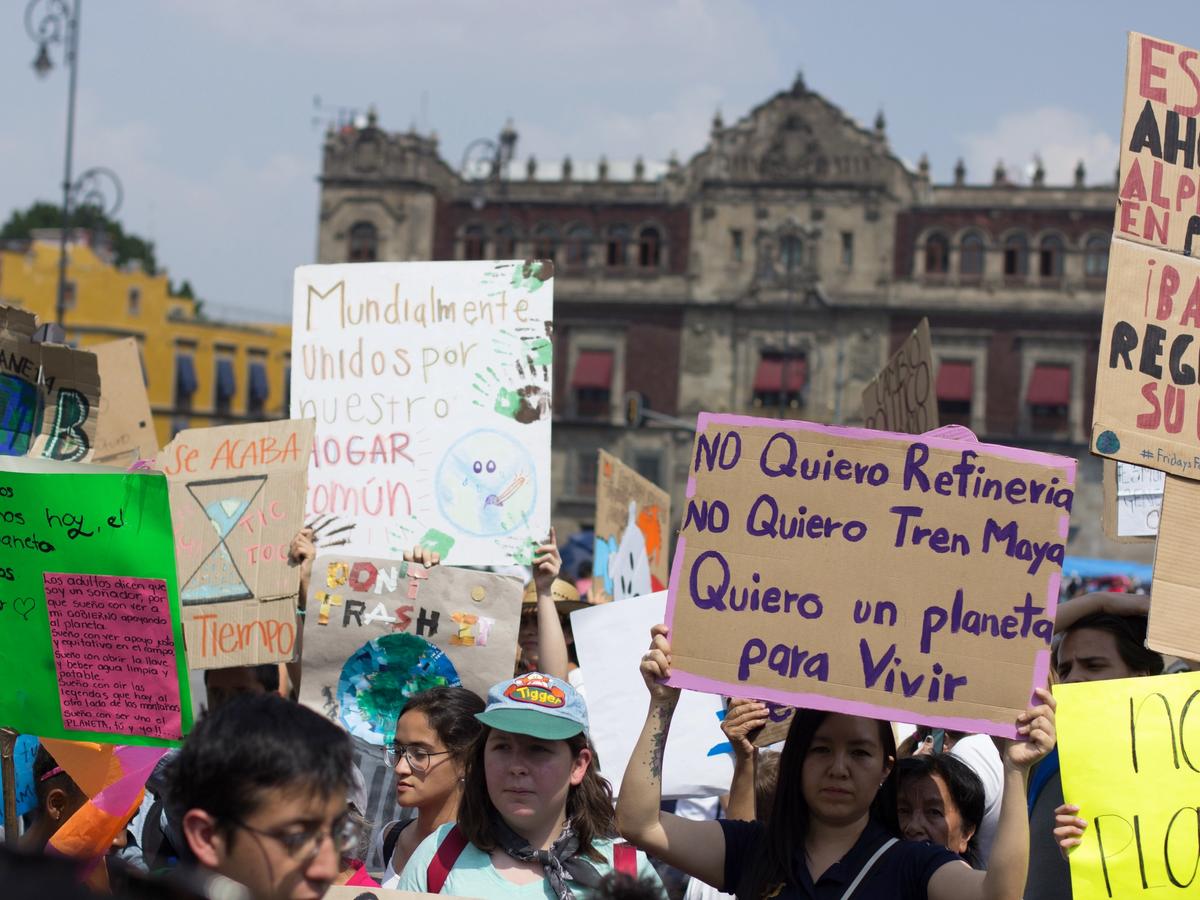As activists and protestors have continued to warn of the potential risks to the vast archaeological and environmental sites posed by the construction of a high speed train connecting tourist destinations in Mexico’s Yucatán Peninsula, the Mexican government has now opened up the conversation and is launching a public consultation on the project.
The consultation is specifically regarding section five of the development, a 67km stretch that would run between the popular resort towns of Playa Del Carmen and Tulum. The total train line would include around 20 stations stretching from the ruined Maya city of Palenque in Chiapas to Cancún. Input from the public can be submitted here.
The Mexican president, Andrés Manuel López Obrador, announced in January that this section would be rerouted through the rainforest, which activists argue could not only cause grievous environmental damage but also threaten the ancient Mayan sites for which the region is well known.
This rerouting was reportedly a response to resort owners, who opposed the original plans for the train to run along the Cancún-Tulum highway.
According to an assessment published by Mexico’s environmental ministry, the development could impact water currents, damage the region’s porous bedrock landscape, and disrupt the soil to the extent that it may cause landslides and subsidence.
It has been reported that the construction has already caused the collapse of multiple cenotes—the region’s famed, swimmable freshwater sinkholes. Many cenotes have archaeological significance, as the ancient Maya considered them to be sacred, so the areas surrounding them are often rich with artefacts.
“They speak of severe impacts to underground flows, to the karstic system. They speak of possible subsidence and landslides, due to the type of soil. They speak of the fragmentation of the forest, of the fragmentation of the fauna’s habitat,” said Araceli Domínguez, the president of the Mayab Ecologist Group, in an interview with El Universal. “The reality is that the area does not allow work of this type to be carried out, and even less on the world’s largest network of underground rivers, which, by the way, seems to be omitted.”
The unique geographic conditions of the region have made it home to the world’s longest underground river, the Sac Atun, or White Cave, which winds 153km through a series of underground limestone caves and which environmentalists have feared for years to be under threat due to overdevelopment.
The high speed train was a major election promise of president Obrador—who touts it as a poverty-fighting endeavor that could create around one million jobs and double the region’s economic growth. Activists have accused him of rushing the construction in order to have the railroad completed by the end of his term, which expires in 2024.
“The problem is that the area is still scarcely explored and we don’t know what else is around there,” Miguel Covarrubias, an independent archaeologist with expertise in the Yucatán, told The Art Newspaper earlier this month. “The mandatory research that must be done before construction begins is being done in a hurry and not with the quality required for archaeological research.”


